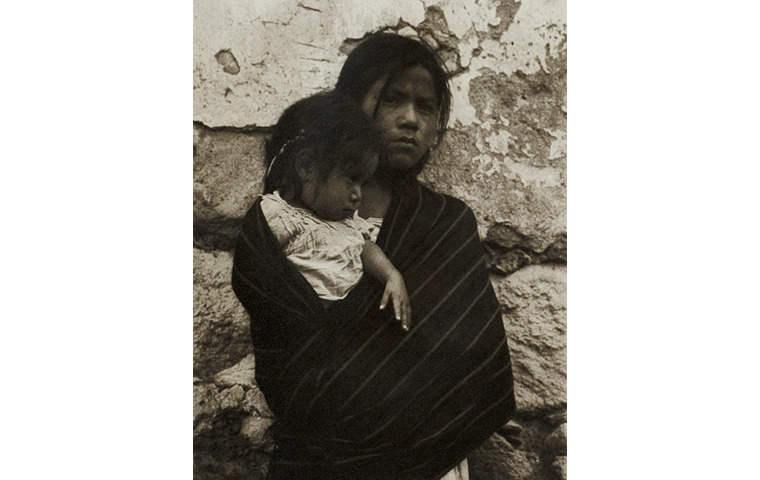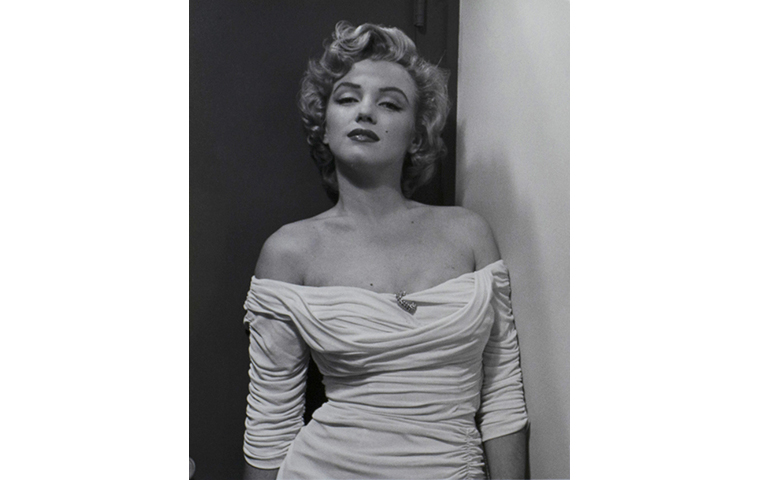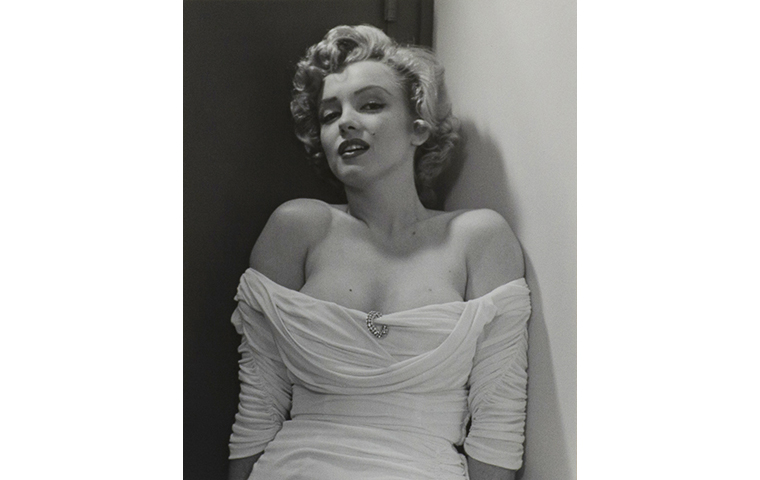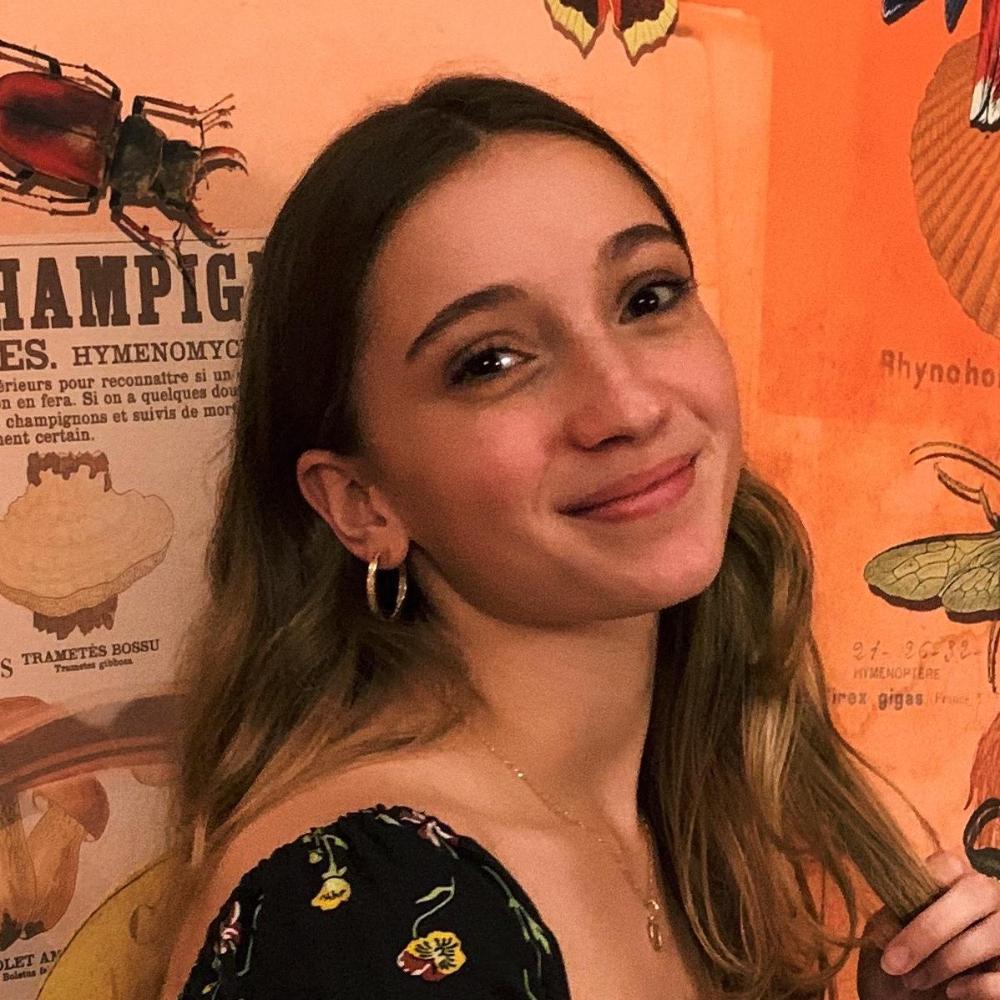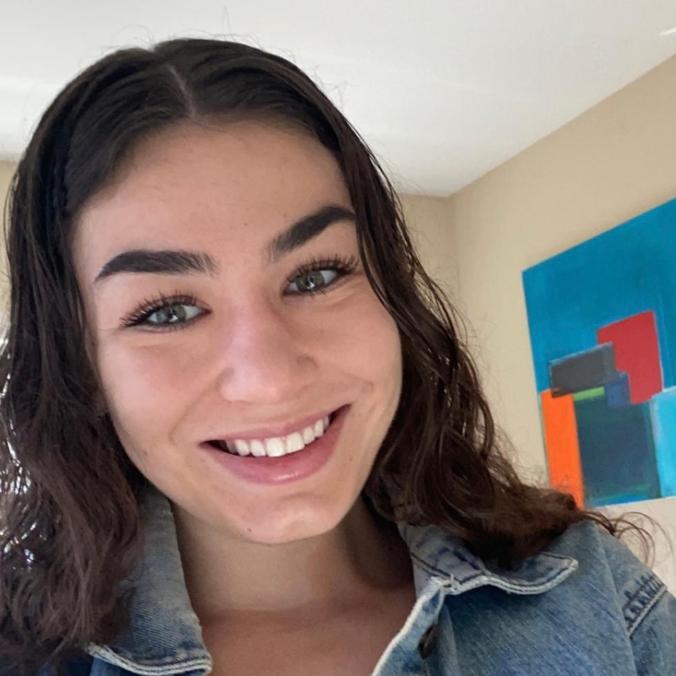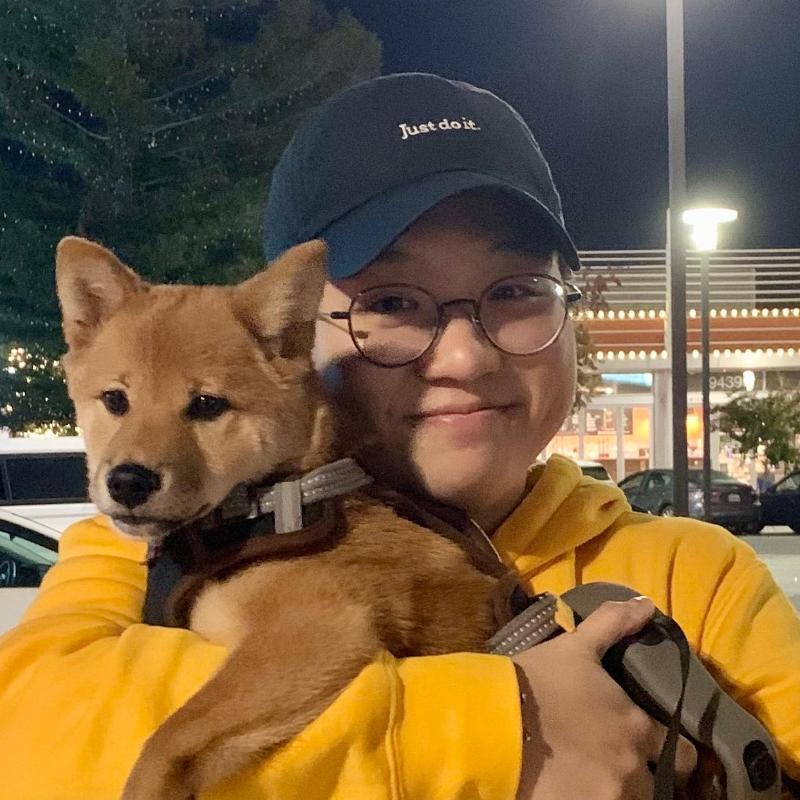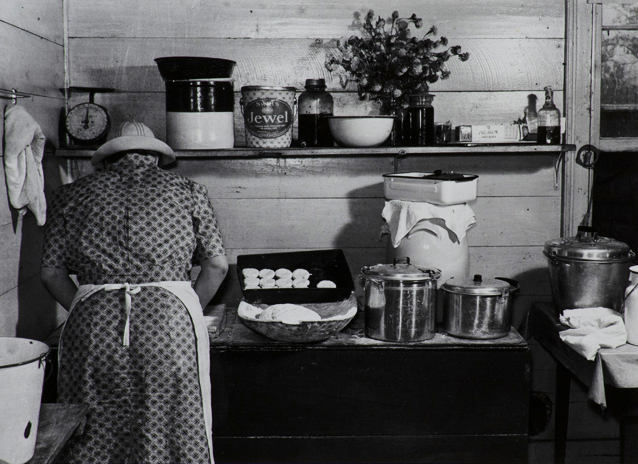
May 24 - July 2, 2021
Virtual Exhibition
This exhibition aims to emphasize the role, representation, and problems endured by women in American photography history. With the dates of all these pictures ranging over 79 years, 1933 to 2012, many social issues throughout the decades were captured. During the 30’s-40’s, there was a strong focus on the Great Depression and the role women played in society and how their hard work was vital. Moving into the 50’s-70’s, individualism, self-expression, and the image of women were popular themes in photography. Women broke social norms and expectations of how they should be and act through this art medium, continuing to spread a new wave of activism and representation. When we get to the 2000’s, this wave continues and now includes women and the LGBTQ+ community fighting for their rights and equal portrayal in society. Through this exhibition we highlight women standing together as one for change all throughout history, and we invite women, men, and all genders of the 21st century to join in and continue to challenge societal norms until every group and individual is equal.

Paul Strand, Girl and Child - Toluca, Part of the Mexican Portfolio, 1933, Photogravure, de Saisset Museum permanent collection, Santa Clara University, Focus Gallery Collection, Helen Johnston Bequest, 6.73.1989.4
This photo by Paul Strand was taken in the midst of the Great Depression in Mexico. He captured a young girl, still a child herself, holding a baby that presumably is her sister or someone close to her. She looks drained and exhausted, her face wiped of any happiness.
The Great Depression caused over fifteen million people to lose their jobs, and significantly changed the roles in society for individuals. Women had to step up in order to keep things running and keep the family surviving. Eleanor Roosevelt started the movement that pushed many able women into the workforce in order to keep families afloat during the most difficult time in economic history. They were not seen as saviors, however, many working women were publicly ridiculed and shamed for “taking jobs from men”. They were not recognized or appreciated, but nonetheless the women knew it still had to be done. Household responsibilities could not be left unattended while mothers were at ten-to-twelve-hour work shifts. Young girls had to step into their new role and take care of the children and household when no one else could, as shown by this picture. She may be young, but her courage, maturity, and bravery speak on behalf of women all over the world. “While women as a group could not end the Depression...the country could never have survived the crisis without women’s contributions.” (Ware p.1). Their contributions did not disappear with the end of the Great Depression too, their attitudes carried on and further pushed the widespread feminist movement in decades to come. That is what makes this piece perfect to start off our exhibition. These women wanted to be seen and heard as equal individuals, and their hard work was no longer going to go unnoticed and unappreciated.

Marion Post Wolcott, Making Biscuits on Corn-husking Day, 1939, photograph, de Saisset Museum permanent collection, Santa Clara University, Gift of David B. Devine, 6.348.1986
This piece highlights the topic of domesticity and the role of women in the late 30’s. It is not a traditional portrait since she is facing away from the camera, however, this further emphasizes the purpose and meaning behind the photo: a woman hard at work is the subject of the photo, but a face and individuality are not the main focus. Wolcott hid the subject’s face in the photo making this picture more universal as well. A faceless woman at work gives room for seeing any and all women in that position, rather than tying this work to one individual and face.
Women’s laborious work was a part of daily life. The photo may seem simple, but it is highlighting a part of the world that many did not bring attention to during this time. “No housewife lost her job in the Depression.” (Ware p.1). Preparing food, as well as the other at-home duties of women in this era such as cleaning, sewing, and caring for children, was an invisible backbone of society. This was mainly because the men and boys did not do any of these necessary tasks because it was seen as “women’s work”. “Little boys were like little kings. Very few homes made the boys work. They couldn’t be touched. If there was something to be done, the girls did it.” (Baillargeon. p.42). Young girls were forced to mature while they were still children, and women came home from work not to relaxation, but to another job. Few were relieved from this burden, and this photo emphasizes that by erasing the self and framing the woman in her kitchen. This piece adds to our exhibition by showing the resilience, strength, and power of women during this time, even through ordinary tasks.
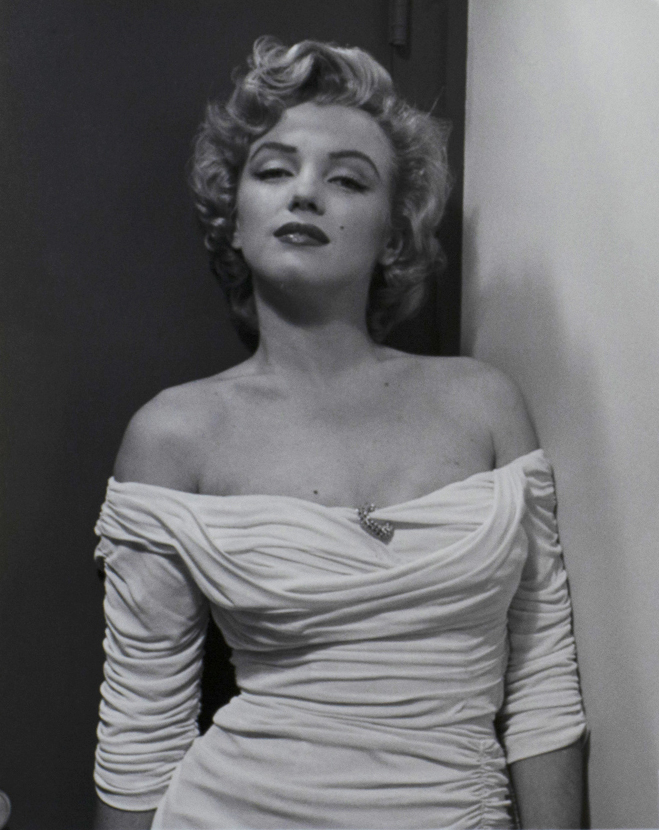
Philippe Halsman, Marilyn Monroe, Life Cover (Magazine Cover photograph), 1952, silver gelatin print, de Saisset Museum permanent collection, Santa Clara University, Gift of Teresa Gabriel Harbaugh, T#1997.4.1
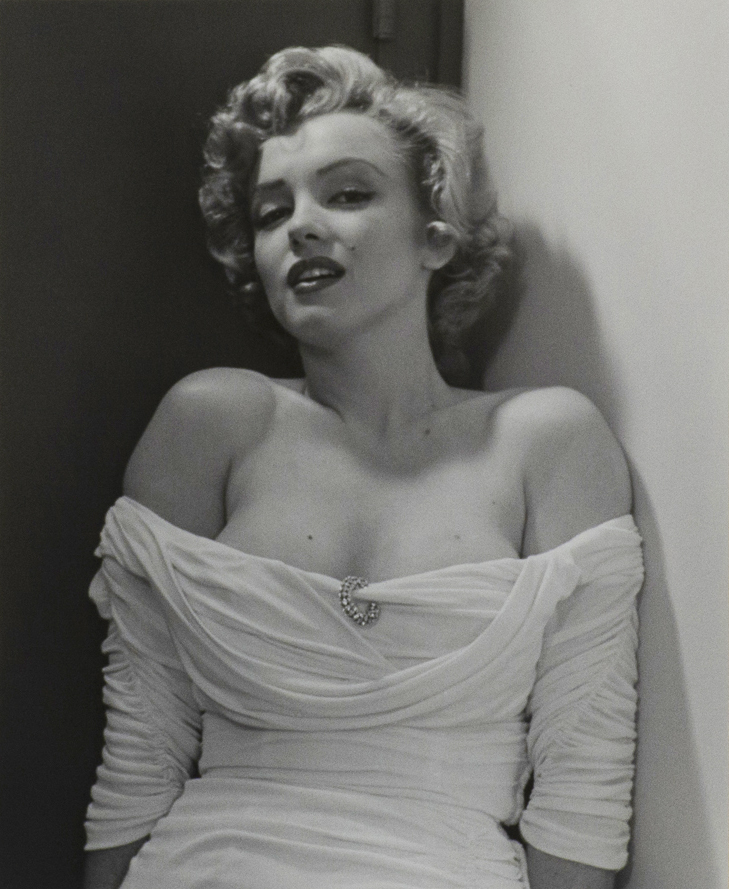
Philippe Halsman, Marilyn Monroe, Life Cover (unsmiling photograph), 1952, silver gelatin print, de Saisset Museum permanent collection, Santa Clara University, Gift of Teresa Gabriel Harbaugh, 1997.4.2
These photographs strongly illustrate the shift in female sexuality that arose in the 1950’s, and the way in which women were represented through media. The 50’s were a time of conformity with strong traditional gender roles at play, however, this era also saw a great change in patterns of sexual behavior which ultimately led to the “sexual revolution” of the 60’s. This was, in part, due to the mass production of automobiles and its effect on sexual norms as cars provided a private place for couples to spend time alone, leading to a rise in premarital sex and, ultimately, birth rates. With this, sexual behavior was changing while traditional norms persisted.
As seen in previous years, women were expected to work domestic jobs as wives, mothers, and homemakers and were restricted from working outside of the home. However, during World War II many women joined the work force and did not want to leave their jobs after the soldiers had returned home. Many of them became very discontented with the status quo.
Phillipe Halsman was well known for his unique take on portrait photography. His photographs were sharp and closely cropped, which was a style that was rarely seen in this era. His most famous works included collaborations with Salvador Dalí and Albert Einstein. During his career, he created a new philosophy of "jump photography" called jumpology, stating that “when you ask a person to jump, his attention is mostly directed toward the act of jumping and the mask falls so that the real person appears” (Halsman). He was intrigued by capturing authentic portraits.
The subject in these photographs is Marilyn Monroe, a very popular and iconic female figure during this era. She became the image of female sexuality and represented the embodiment of women in the new and changing world of the 50’s. The first piece, Marilyn Monroe, Life Cover (unsmiling photograph), was a photo taken during the photoshoot, but was not chosen for the cover of the magazine. She stands in a powerful pose with her chest out, chin up, with a smirk on her face while looking downwards at the camera and audience. The photo that was chosen for the cover is the next piece in our exhibition, Marilyn Monroe, Life Cover (Magazine Cover photograph). Although these photographs seem to be very similar, the body language and prevailing energy is vastly different. In this photo, she is hunched over, backed into a corner, and her dress is slightly lowered, revealing more of her chest. Because this era was less supportive of women's empowerment, and promoted the sexualization of women, I think that Life used this photo as it shows her in a more submissive and sexualized position. They did not want to showcase her strength and power, rather her femininity and sexual availability.
This is a turning point in our exhibition, as we see a shift in sexual behavior and the portrayal of women in the media during the 50’s. However, we still see this demoralization and inequality in gender roles and stereotypes.
This photograph shot by Judy Dater in 1974 ties into feminism and the representation of the female body. It was taken in a time when women were repainting the portrayal of their gender to the rest of the world. In the book, Disco Divas: Women and Popular Culture in the 1970s, edited by Sherrie A. Inness, there is a breadth of information circling the topics of pop culture, social stereotypes, political climate, and women’s roles in society and how the 70’s were a big change for them. Pop culture was showing women defying social norms, the Bionic Woman and Charlie’s Angels were free to do whatever they wanted without men bossing them around, and were shown with a lot of power and "super-hero" abilities usually reserved for men. Young women looked up to them, sparking activism in the real world.
Dater contributed to this liberating movement by using photography to highlight the emotions and expressions of real women. She wanted to create a new, strong image for what makes a woman and break the preexisting ones of staying in a bubble in the man’s world. With this new change of stereotypes, photographs such as these depicting nude women in the wilderness caused a lot of commotion and uproar. Female sexuality has always been repressed and seen as taboo, but women of this time decided to remodel this to allow sexual freedom. While this is not the main focus of the image, hints of it are woven into the hidden meaning and symbolism of the picture, further encapsulating the essence of the 70’s.
This particular image is of a young, nude woman against a tree looking over at an older, fully dressed woman. There is room for the viewers’ interpretation, this placement gives the impression that the two different types of women, seemingly opposite, are placed in the same frame for comparison. One possible interpretation is reflection on the social expectations of women at different ages; young women were generally seen as pretty, dainty, and as sexual objects for men to consume (voyeurism), whereas older women were not. This image fought the social norms and expectations put upon the women of that time and allowed for women to portray their own image, separate from a man. This ties to our exhibition by marking a significant time in our history where women stood up, against all odds, to fight for equal representation and the ability to write their own destiny.
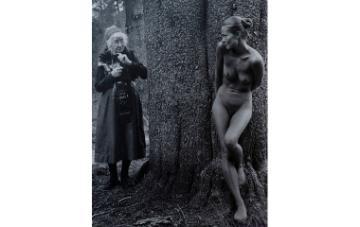
Judy Dater, Imogen and Twinka at Yosemite, 1974, gelatin silver print, de Saisset Museum permanent collection, Santa Clara University, Focus Gallery Collection, Helen Johnson Bequest, 6.28.1989
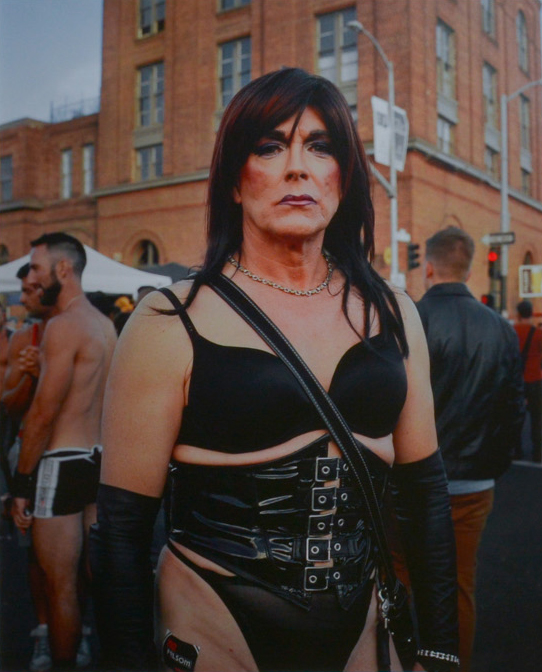
Janey Delaney, Folsom Street Fair, 2012, archival pigment print, de Saisset Museum permanent collection, Santa Clara University, work selected by students in SCU Professor Bridget Gilman's spring 2016 class, ARTH 197: Photography and the American West. Funds for this purchase were made possible by the Marmor Foundation, 2016.11
This piece broadens the social definition of a woman and represents a piece of the diverse LGBTQ+ community. This piece illustrates the shift in societal and gender acceptance that we see in the later 2000’s, and as we enter the 21st century, social equality activism becomes extremely prevalent. In today’s society, people of all genders, sexualities, and races publicly fight for their rights and equal representation in the world. This particular photo, taken by Janet Delaney in 2012, takes place at an adult-themed street fair and fundraiser in San Francisco. The Folsom Street Fair is a very popular event that allows those in attendance to freely express their sexuality and individuality. The subject of the photo stands, strong and confident in a revealing outfit, expressing their truest form and interpretation of their sexuality without the need to place a label on their gender, or play into social norms. They represent the idea that sexuality and gender can be fluid, a spectrum that is not always straightforward and does not have to be defined.
Delany is best known for her series, South of Market. Titled after the San Francisco district, the series features a collection of photographs documenting the transformation and early stages of gentrification happening in South of Market in the 80’s. She used her photographs and their accompanying interviews to give a voice to those “who remained at the edges of the site but were about to be immeasurably impacted by rising rents brought on by the arrival of the conventioneers” (Delany). Her storyline continues when she returns to the San Francisco neighborhood after being gone for 20 years, with a new collection of photographs within her SoMa New series. This piece, Folsom Street Fair, is part of this new collection of works and represents the ever-shifting development of the district and its residents. This photo perfectly concludes our exhibition and displays the amount of growth we have experienced in our society over the years. Dressing like the subject of this photo was not socially acceptable in past generations, which further displays our progression as a society. We have worked hard to get to where we are now and should continuously strive to improve.
Envisioned Installation Layout
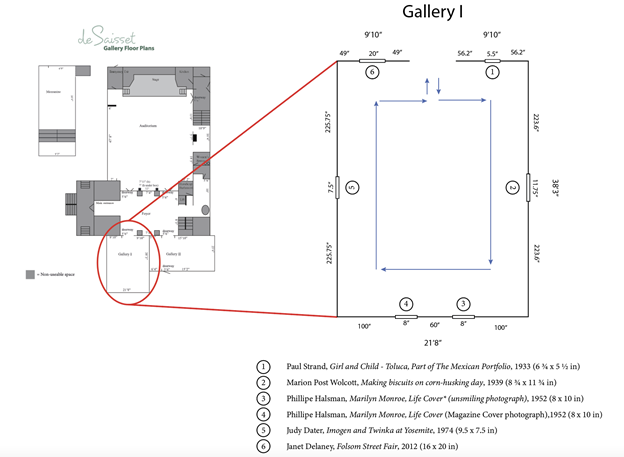
The pieces in this exhibition are placed in chronological order. This allows the viewer to be engaged in the evolution of female portrait photography and visually see the growth and change in the way women were portrayed and represented over time through this collection of photos. The exhibition starts off to the left with the first photograph by Paul Strand entitled Girl and Child (1933). Continuing onto the next piece is Marion Post Wolcott’s Making biscuits on corn-husking day (1939), followed by, on the far wall, two of Phillipe Halsman’s photos of Marilyn Monroe- the first is Marilyn Monroe, Life Cover (unsmiling photograph) (1952) followed by Marilyn Monroe, Life Cover (Magazine Cover photograph) (1952). Next, on the wall to the right, is Judy Dater’s photograph entitled Imogen and Twinka at Yosemite (1974). And lastly, ending the exhibition is Folsom Street Fair by Janet Delaney (2012).
Having the two Marilyn Monroe photographs side by side on the far wall facing the door allows viewers in the museum to see these photographs first when entering our exhibition.
Because Marilyn Monroe is such an iconic and recognizable figure these photos will catch the eye and attention of viewers and will attract them into our exhibition to learn more about what it is about. We also wanted to place them relatively close to each other as they are meant to be compared to one another. They are very similar photos but illustrate an important and interesting message.
When standing in the middle of the room while facing the door, you see two pieces side by side. The piece on the right, the earliest piece in our exhibition, is Girl and Child by Paul Strand from 1933. On the left side is the last and most recent piece in our exhibition which is Janet Delaney’s Folsom Street Fair from 2012. The juxtaposition between these two pieces clearly portrays the evolution within the form of female portrait photography overtime. Seeing the stark contrast perfectly summarizes the purpose of the exhibition and nicely concludes the audience’s experience.

